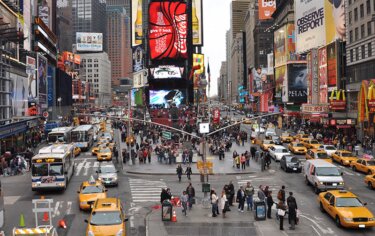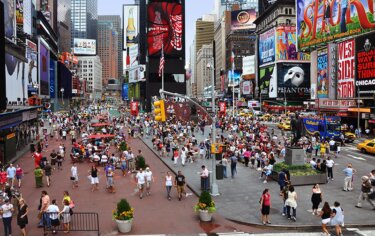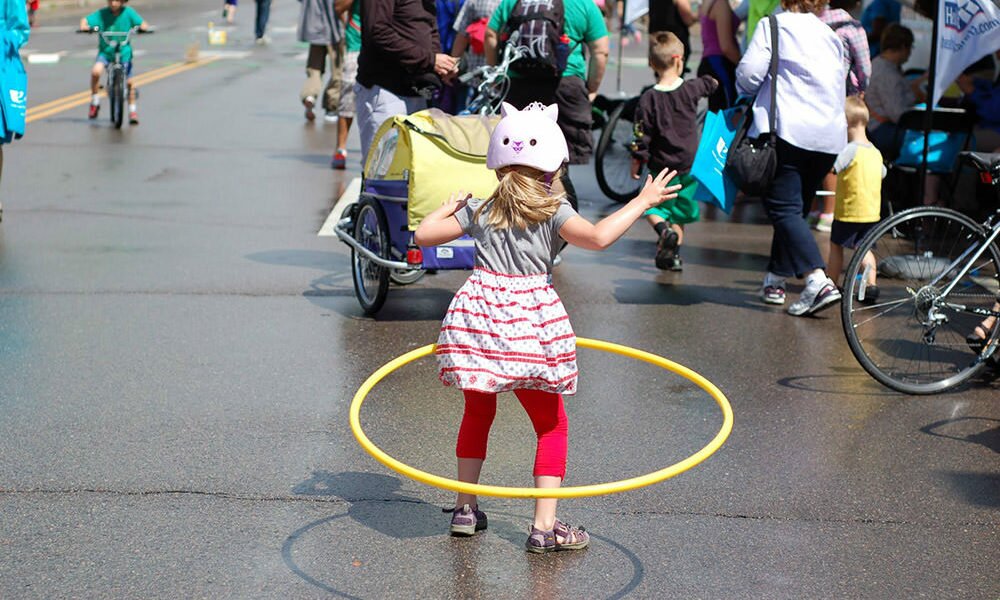"Many of the best, most authentic and enduring destinations in a city, the places that keep locals and tourists coming back again and again, and that anchor quality, local jobs, were born out of a series of incremental, locally-based improvements. One by one, these interventions built places that were more than the sum of their parts."
The Doable City Reader
There is so much that can be done to make our cities happier, healthier and more prosperous places. Every day in cities around the world, citizens and city planners alike are showing us how small actions can scale up to have massive impact. And they can in your city too.
That’s what the Doable City Reader is about. In June 2014, 8 80 Cities, in collaboration with the Knight Foundation, brought 200 civic innovators from around North America together in Chicago at the Doable City Forum to share and discover methods for rapid change making. The Doable City Reader is inspired by the rich conversations amongst presenters and participants at that forum. It is a resource for any and all people who want to make change in their cities and is meant to educate, inspire and empower anyone to do so.
We know that major retrofits can change the face of a city for the better. We’ve seen highways torn out to reveal lush rivers that run beneath. Mega-parks built atop railway stations. Abandoned Wal-Marts turned into public libraries.
But these big wins can take decades to pull off. With our cities in crisis, change needs to happen sooner than that. And it can — literally overnight. By starting out with low-cost, low-risk, but high-visibility initiatives, we can begin to transform and improve our cities within days or even hours.
At 8 80 Cities, Gil Penalosa dubbed these quick wins “impatiens,” after the colourful and resilient flowers that nearly anyone can maintain and that immediately brighten a garden patch. “Orchids,” on the other hand, refer to projects that take more time and effort to bring into bloom.
These bold impatiens projects help nurture the open and fertile environment that makes orchids easier to grow, by generating credibility and empowerment amongst citizens that help fuel support.
Consider what happened in New York City in 2009, when transportation commissioner Janette Sadik-Khan and her crew went out one day with some orange plastic traffic barrels and plastic lawn chairs and created, in a matter of hours, a temporary pedestrian plaza out of Broadway in Times Square — one of the busiest sections of roadway in the world.

If Sadik-Khan had asked then-mayor Michael Bloomberg or the residents of New York City for their blessing to shut the street down for good, she’d have been deemed crazy. But instead, she just asked for six months to give it a go. She told Bloomberg: “If it worked better for traffic, if it was better for mobility, if it was safer, better for business, we could keep it. And if it didn’t, no harm, no foul, we could put it back, because these were temporary materials.”

And it worked. Pedestrian injuries in the area plummeted by 35 per cent. Traffic flow improved and taxis moved faster. Retail rents doubled and new flagship stores opened. But perhaps most importantly, people flocked to the space and revelled in the experience of it. Instead of telling New Yorkers what they should want or why they should want it, Sadik-Khan gave them the chance to fall in love with the idea by experiencing it themselves.
“We were able to show how it worked,” Sadik-Khan said. “Instead of waiting through years of planning studies and computer models to get something done, we’ve done it with paint and temporary materials. And the proof is not in a computer model, it is in the real-world performance of the street.”
The proof of Sadik-Khan’s strategy’s success is in the street too: pavers are currently being laid that will make the project a permanent fixture in the streets of New York once and for all. But instead of waiting five years for that plaza, New Yorkers have had it all along.
Open streets, open minds
Even pilot projects lasting just a matter of hours can be enough to win the confidence of politicians and the hearts of citizens. An example lies in the hundreds of cities around the world that have begun opening their streets to pedestrians and cyclists for a day at a time through Ciclovía or Open Streets programs, giving people an opportunity to experience a new kind of ownership over their streets and imagine how streets could change.
“One of the most important things about Open Streets is that it reminds people that the streets are public spaces that belong to everybody and that it’s not a good use of that resource to only allow the use of cars to go from point A to point B 24-7,” said Gil Peñalosa, who founded the Ciclovía movement in Bogotá, Colombia in the early 2000s. “We can have different uses according to the time of the day, of the week, of the year.”
8 80 Cities program director Emily Munroe, who has advised cities around the world on developing Open Streets initiatives, points to Mexico City as a shining example. The seething metropolis is home to some of the world’s most snarling traffic congestion, but for the past several years it has operated a Ciclovía program that makes 12 kilometres of roadway car-free and open to walkers, joggers, cyclists, yoga and jazzercise classes and anything else the residents can think of every Sunday of the year. Once a month the program expands to cover 32 kilometres.

Launching such a program in a place like Mexico City would be considered a feat in and of itself, but Munroe points out that the ripple effect is even more notable. Since the Ciclovía program started in 2007, the shift in the city’s ability to push through cycling- and pedestrian-friendly improvements is impossible to ignore. They’ve launched a bicycle share and a 15-year-long green plan to promote cycling and increase the number of cyclists in the streets. They laid down a 17-kilometre segregated bike lane that splices right through the heart of the city on its main avenue, Paseo de la Reforma, and have plans for more.
“The only place that they have a separated cycling track in Mexico City right now is on Reforma, which is the exact route that the ciclovía goes down. That’s not a coincidence,” says Munroe.
From citizen to city maker
It’s not just city-led initiatives that can have this effect. Behind some of the most successful impatiens — projects that started small yet had a major impact on the permanent livability of cities — are citizens.
Consider the example of a simple art installation. In 2005, a group of artists from the San Francisco design studio Rebar plunked a pocketful of change into a parking meter, unfurled a roll of grass and plopped down a potted tree and a bench. They invited passersby to join them as they hung out for a couple hours in their temporary park (pun intended) while the meter ran down, then packed up and went home.

When an image of the park circulated on the Internet, Rebar got so many requests for replica installations that they created an open-source manual to enable people to do it themselves. The idea spread as people rallied around it. A movement was born — every year on the third Friday of September, people around the world create similar installations, an event now known as PARK(ing) Day.
The impact of the movement went beyond the temporary parks themselves. The San Francisco planning department approached Rebar to help develop a pilot project prototyping “parklets” — miniature public space modules that included public seating, tables and bike racks, and could slot into street-front parking spots and extend out from the sidewalk to create extra public space. After Rebar helped the department successfully install more than 20 of these temporary units in 2010, the city rolled out its official parklet permit program in 2011, which enables any private resident or business owner to create a permanent parklet. The program has since been replicated in dozens of cities worldwide.
The Rebar group didn’t need to wade through the process of creating a full-fledged permanent park to reclaim a small piece of public space. And what they created was something even more powerful: proof that even a simple action can have a profound effect.
This chapter is available as a PDF: download a copy.

